Hoka Arahi 6 Review (2024): Best Stability Pick?
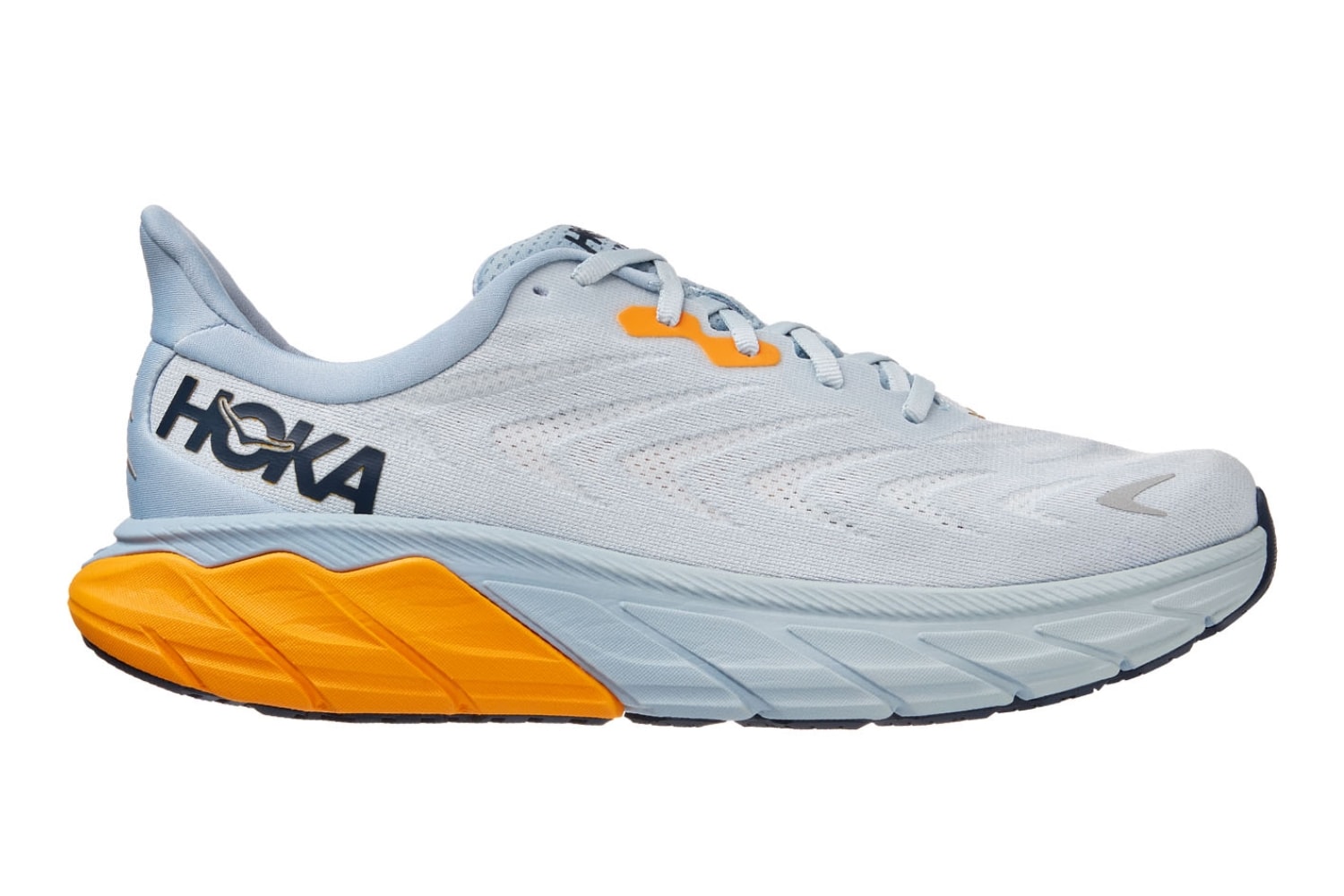
Published on: 09/14/2023
The Hoka Arahi 6 is a comfortable, stable shoe for recovery and long runs.Consensus
Very good lightweight stability shoe for overpronators who want to extend distances in comfort.
Don’t have time to read the full review? Here’s what you need to know.
Hoka shoes are famous for their extra-high-stack and low-drop soles and Arahi 6 is one of its star models for stability. This new version is virtually identical to its predecessor.
It combines cushioning and stability for runners who need extra support. Still incorporating Hoka’s proprietary J-Frame technology and EVA foam cushioning, the Hoka Arahi 6 is neither too soft nor too firm. We applaud the fact that Hoka makes it in part from recycled materials. What’s more, it’s 100% vegan.
These running shoes seem to be more suited for easy recovery jogs or long runs. They’re designed for runners who overpronate and are looking for moderate support. This model has no major changes, so if you liked the last version, you’ll love the Arahi 6.
Please read our full review of the Hoka Arahi 6 for more information.
PROS
- Stable, relatively lightweight shoes
- A feeling of gentle, non-invasive stability
- Very comfortable
- Improved lacing system
CONS
- Doubts about the shoe’s potential lifespan
- Lacks some bounce and responsiveness
Hoka Arahi 6 Complete Review Analysis
Introduction
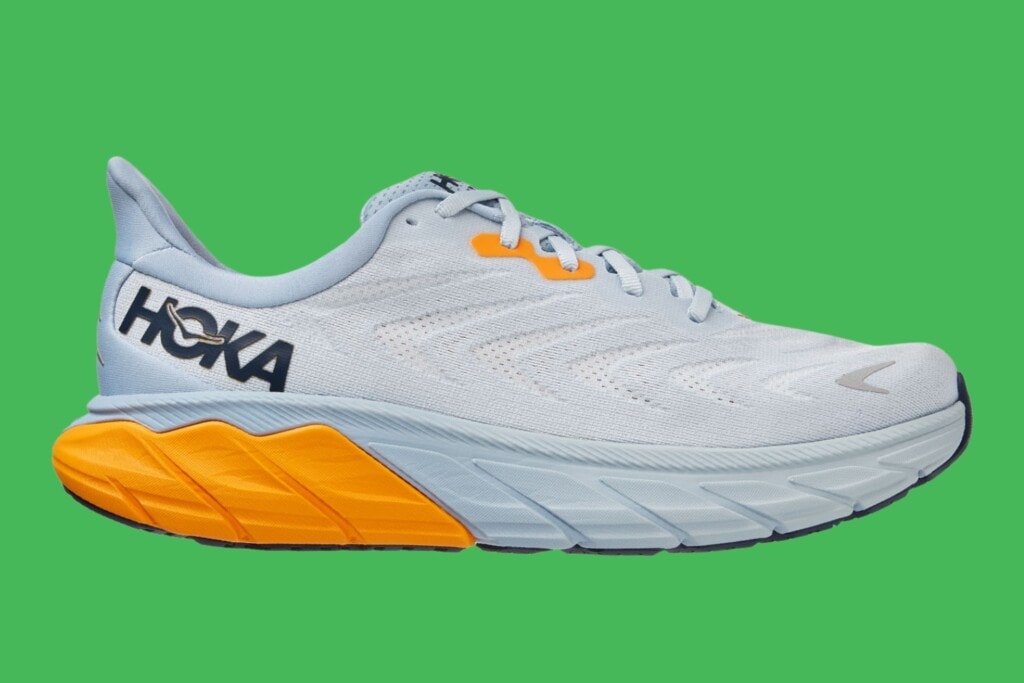
The Hoka Arahi 6 takes the highlights of the brand’s other running shoes and adds a touch of stability for overpronators.
While this type of shoe is generally heavier than neutral running shoes, the Arahi 6 stands out for its relatively light configuration.
This new version doesn’t bring any major changes, but there are a few minor improvements. Here’s what you can expect.
Cushioning

The midsole is virtually unchanged from the previous version. As stable as ever with a wide base, it features a J-Frame to create an overall fluid experience. The stack height of 30 mm at the front and 35 mm at the rear gives it a heel-to-toe drop of 5 millimeters.
The CMEVA (compression-molded) foam midsole provides balanced cushioning. This is not a running shoe that feels close to the ground with every step, nor is it a very soft shoe. Testers all report a moderate “neither super stiff nor super soft” experience. One reviewer noted a lack of spring and energy return.
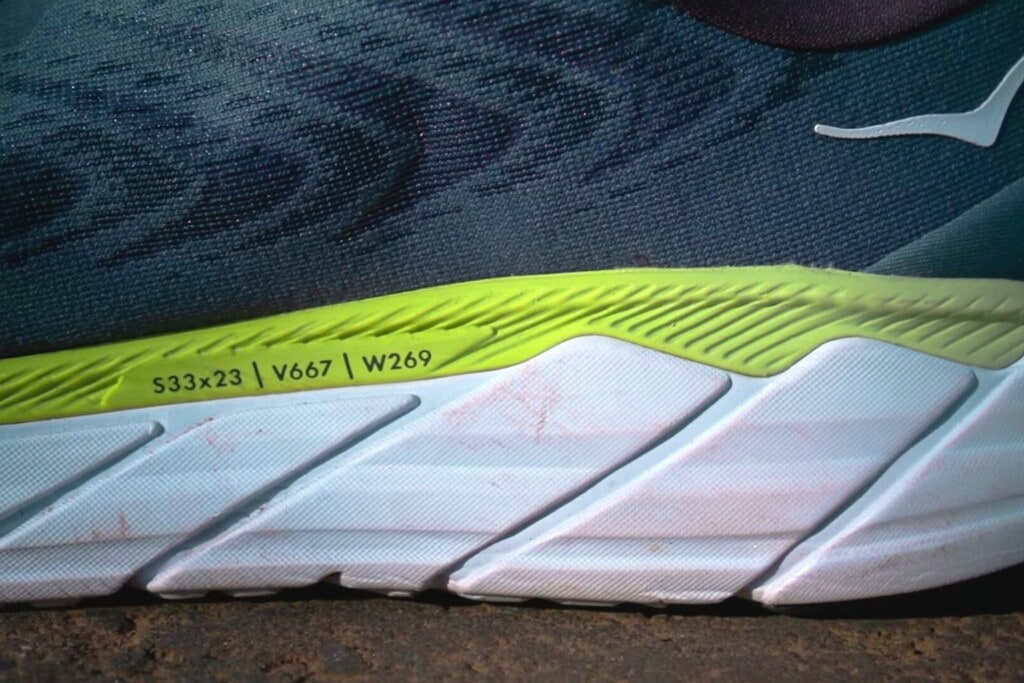
J-Frame technology provides structure and stability for runners who need it. J-Frame is a J-shaped frame (as its name implies) strategically placed in the midsole to prevent overpronation. You can identify it from its different color in the sole. This technology provides reinforced support with firmer foam on the medial side, where the foot can tend to roll inwards. As such, the Arahi 6 are stability shoes for overpronators.
The midfoot part of the sole is made of soft EVA foam, providing a light, comfortable cushion. This impact-absorbing foam is perfect to run longer miles!
Finally, the Meta-Rocker geometry facilitates a smooth ride. The shoe allows you to transition through the different phases of the gait cycle more easily.
Foot lockdown (upper)
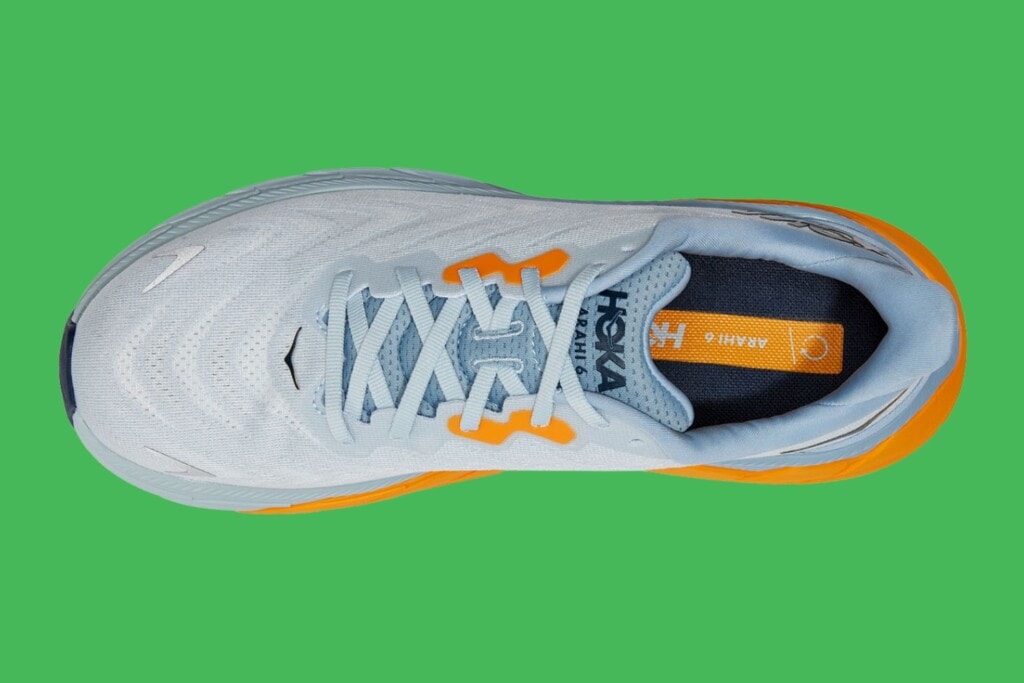
The Arahi 6 running shoe is slightly wider. It offers a good midfoot lockdown but widens by 1 millimeter in the forefoot for a more comfortable fit. On long, slow, or recovery runs, the testers agreed that this was not a problem. If you don’t like being squeezed into your running shoes, especially in the forefoot, your toes can benefit from a spacious toe box.
The mesh panels appear to be thinner, improving ventilation and breathability. These running shoes weigh 8.1 oz / 230 g for women and 9.6 oz / 272 g for men. Admittedly, they are lighter, but we have our doubts about the sturdiness of the upper. This is something to keep an eye on after several runs.

The thicker, cushier tongue has all testers agreeing on the shoe’s extra comfort and secure fit. And finally, in this sixth version, the laces are shorter! You can more easily tie your shoes without double or even triple knotting! On the Arahi 5, they’re 3 or 4 times longer! This new lacing system suits most runners.
Reviews differ on the heel collar and counter. Some like it to make it easier to get in and out of the shoe: “I love the high heel counter, my thin heels lend themselves well to it.” For other testers with wider feet, “the fit is pretty tight.” If we take the example of a tester with standard feet who uses his usual size, “the fit seems roomy in the front, perfect for recovery jogging or long runs.”
Grip
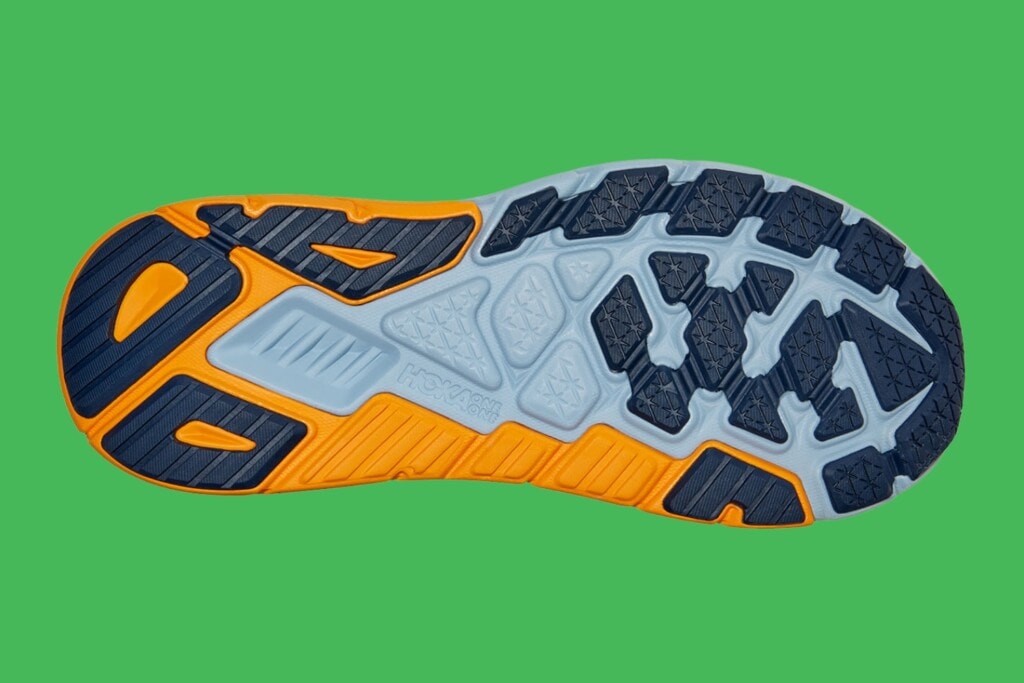
The outsole translates into fairly thin rubber: only 2.1 millimeters of material under this running shoe. Not sure that’s enough to pile up miles.
The Hoka Arahi 6 is not very flexible, but the ride is very smooth and more flexible in the forefoot. It bends with difficulty, which is to be expected given the stability technologies and the amount of foam used! The biggest drawback cited by testers is the lack of grip on the road. These running shoes simply aren’t made for fast runs or taking a sharp turn at full speed.
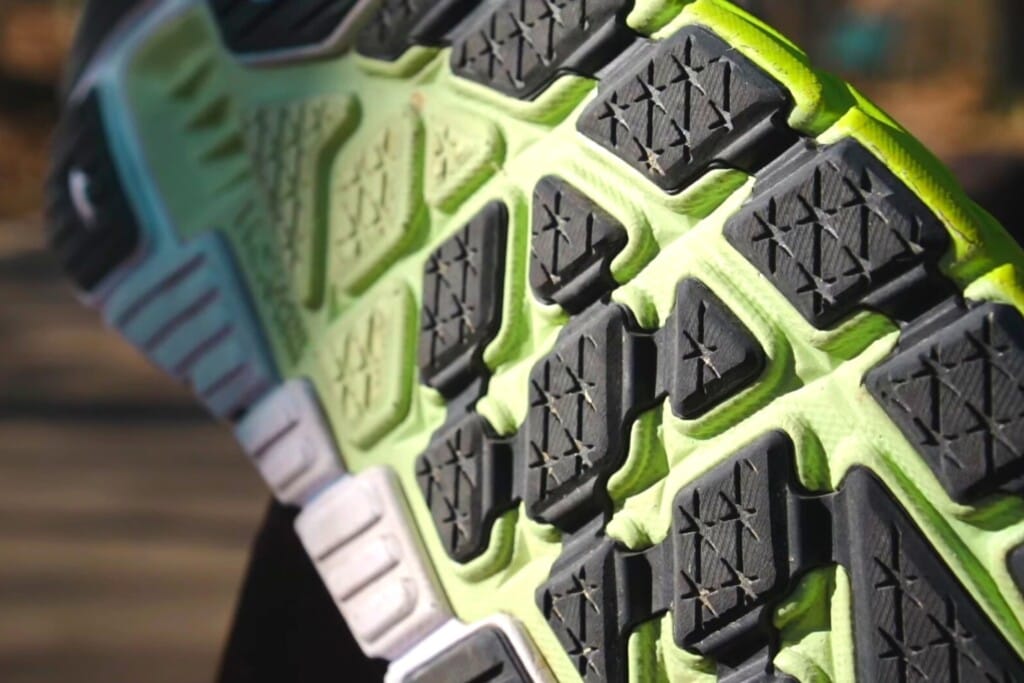
Testers admit to keeping them for longer runs and recovery. They are great to use on roads, soft paths, or coastal trails if you’re lucky enough to run near the sea.
Ride
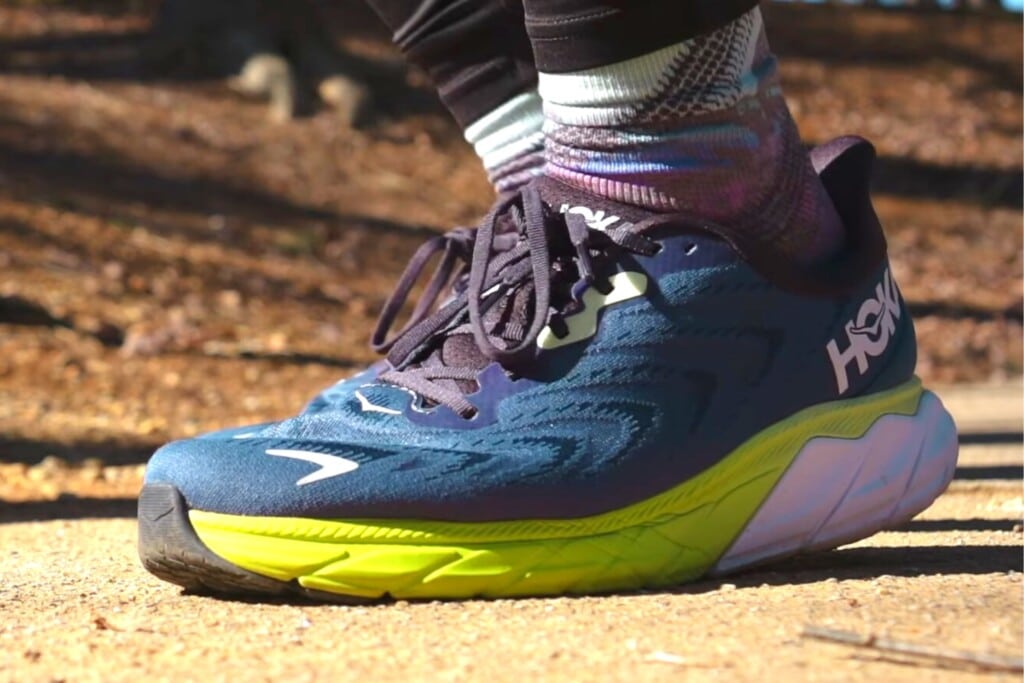
Although lacking in responsiveness, the Arahi is, first and foremost, a stability and protection shoe that offers more support for runners with overpronation. Its generous stack absorbs shocks and impacts to tolerate long distances better.
Its primary purposes are daily training and recovery jogs.
The midsole’s Meta-Rocker delivers smooth transitions as it facilitates forward propulsion. Testers report using them for distances between 10km and 20km, with the possibility of going beyond the half-marathon!
Conclusion
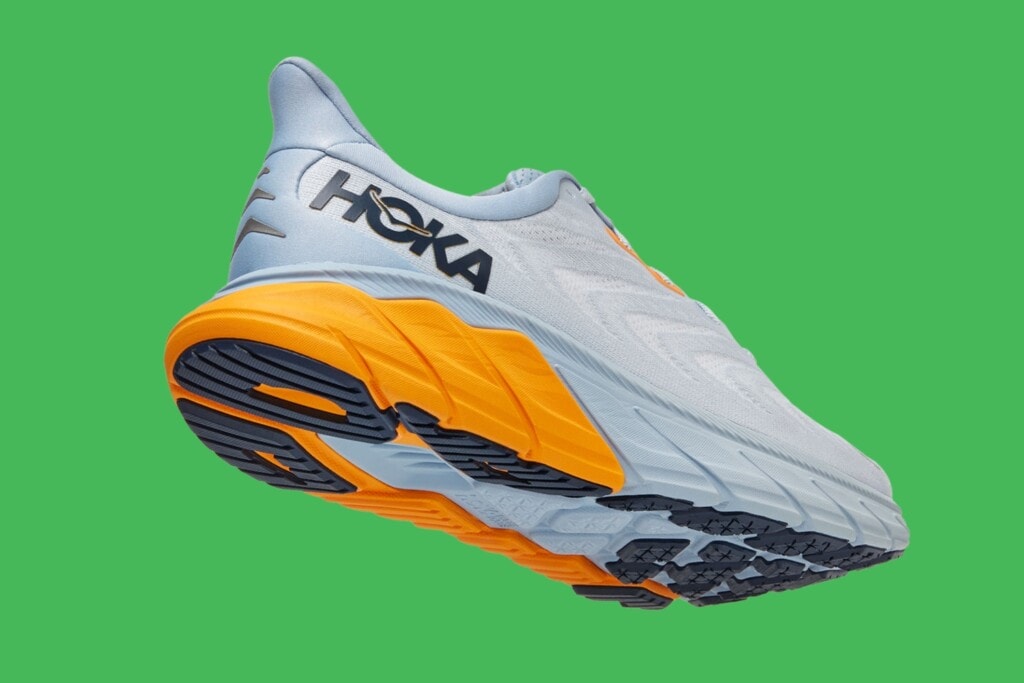
The J-Frame and Meta-Rocker technologies allow the Hoka Arahi 6 to offer comfort and stability over long distances. The lighter weight compared to direct competitors gives it a clear edge. However, remember it offers moderate stability and may not be suitable if you need something higher (like the Kayano offers, for example).
The main drawbacks are the potential lower durability and disappointing traction. Still, it’s a solid pick overall and one of the best in its category!
Facts
Technical Specs
| Terrain | Road |
| Pronation type | Overpronation (stability) |
| Drop | 5 mm |
| Heel height | 35 mm |
| Forefoot height | 30 mm |
| Weight (men) | 272 g/9.6 oz |
| Weight (women) | 230 g/8.1 oz |
| Features | Vegan, Recycled materials |
| Athletes | |
| Release year | 2022 |
| Price | Check prices |
Cushioning
| Softness | Balanced |
| Responsiveness | Low |
Technologies
| Outsole | Rubber |
| Midsole | CMEVA, Late Stage Meta-Rocker Geometry |
| Upper | Engineered mesh |
Use
| Speed | Slow, Moderate |
| Distance | Mid, 10K, Half marathon, Long, Marathon |
| Workout | Daily running, Recovery |
Comparisons
Frequently Asked Questions (FAQs)
This shoe fits true to size. What’s more, the forefoot is relatively wide to suit as many athletes as possible.
Did you know?
Since 2017, we have analyzed hundreds of road running shoes, and thousands of runners trust us to find the perfect pair every month!
Discover our selection of the best road running shoes.
